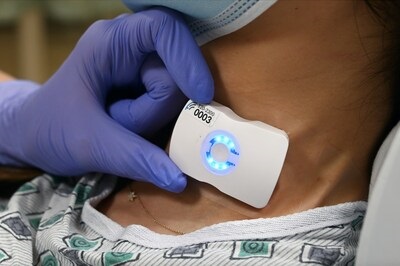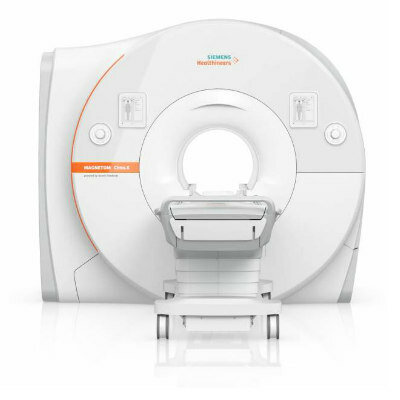Wearable Ultrasound Device Helps Hospital Reduce Sepsis Mortality, Length of Stay, and Cost
|
By MedImaging International staff writers Posted on 16 Sep 2024 |

Sepsis is a critical medical emergency that occurs when the body's response to an infection causes damage to vital organs, potentially leading to long-term complications and often resulting in death. Each year, over 1.7 million people in the United States are diagnosed with sepsis, and 350,000 of these adults die—surpassing the combined death toll from opioids, breast cancer, prostate cancer, and stroke. Estimates suggest that up to 79% of patients experiencing septic shock can be saved through prompt diagnosis and treatment, highlighting the importance of awareness and timely recognition of sepsis signs and symptoms. Recently, a newly released case study has detailed how a large public hospital utilized the world's first Doppler ultrasound to enhance the care of patients with sepsis and septic shock.
FloPatch, developed by Flosonics Medical (Ontario, Canada), is the world's first wireless, wearable Doppler ultrasound device that allows for real-time blood-flow assessments at the point of care, aiding in the resuscitation of critically ill patients, including those suffering from sepsis and septic shock. This FDA-approved, hands-free device attaches to a patient's neck over the carotid artery, capturing real-time blood flow data with each heartbeat. Advanced analytics decompose each heartbeat into essential health metrics, which are wirelessly sent to a secure iOS application. Intravenous (IV) fluid resuscitation is a crucial component in treating sepsis. However, determining the appropriate volume of fluid to administer is one of the most complex and error-prone interventions in critical care. Capable of being deployed in under three minutes, FloPatch provides rapid, continuous hemodynamic assessments, enabling greater precision in IV fluid management and allowing for informed, timely decisions at the patient's bedside.
Flosonics has published a case study highlighting a successful initiative by a 439-bed publicly funded nonprofit hospital in the U.S. to reduce sepsis mortality. In 2023, the hospital implemented FloPatch to assist clinicians at the bedside in accurately determining the appropriate amount of IV fluids for patients. Following the incorporation of FloPatch into a broader sepsis improvement program, the hospital observed substantial enhancements in the care of patients with sepsis and septic shock, including a dramatic reduction in mortality rates—from 30% to 5%—among patients who met the criteria for sepsis or septic shock. Additionally, the hospital experienced a 35% decrease in Intensive Care Unit (ICU) admissions for sepsis patients and a two-day reduction in ICU length of stay.
"It can provide real-time data and can be used as another vital sign that is a more accurate reflection of adequacy of fluid resuscitation than heart rate or blood pressure alone. I believe it will make a big difference,” said Kristina Kury, M.D., Medical Director of Critical Care at Sutter's Eden Medical Center, which has also implemented FloPatch. “Even if we're able to reduce sepsis mortality by just a few percentage points throughout Sutter Health, that could potentially be thousands of lives saved. If this technology is embraced by other health care systems, it could have an enormous impact on sepsis mortality across the nation."
Related Links:
Flosonics Medical
Latest Ultrasound News
- Wireless Chronic Pain Management Device to Reduce Need for Painkillers and Surgery
- New Medical Ultrasound Imaging Technique Enables ICU Bedside Monitoring
- New Incision-Free Technique Halts Growth of Debilitating Brain Lesions
- AI-Powered Lung Ultrasound Outperforms Human Experts in Tuberculosis Diagnosis
- AI Identifies Heart Valve Disease from Common Imaging Test
- Novel Imaging Method Enables Early Diagnosis and Treatment Monitoring of Type 2 Diabetes
- Ultrasound-Based Microscopy Technique to Help Diagnose Small Vessel Diseases
- Smart Ultrasound-Activated Immune Cells Destroy Cancer Cells for Extended Periods
- Tiny Magnetic Robot Takes 3D Scans from Deep Within Body
- High Resolution Ultrasound Speeds Up Prostate Cancer Diagnosis
- World's First Wireless, Handheld, Whole-Body Ultrasound with Single PZT Transducer Makes Imaging More Accessible
- Artificial Intelligence Detects Undiagnosed Liver Disease from Echocardiograms
- Ultrasound Imaging Non-Invasively Tracks Tumor Response to Radiation and Immunotherapy
- AI Improves Detection of Congenital Heart Defects on Routine Prenatal Ultrasounds
- AI Diagnoses Lung Diseases from Ultrasound Videos with 96.57% Accuracy
- New Contrast Agent for Ultrasound Imaging Ensures Affordable and Safer Medical Diagnostics
Channels
Radiography
view channel
AI Detects Fatty Liver Disease from Chest X-Rays
Fatty liver disease, which results from excess fat accumulation in the liver, is believed to impact approximately one in four individuals globally. If not addressed in time, it can progress to severe conditions... Read more
AI Detects Hidden Heart Disease in Existing CT Chest Scans
Coronary artery calcium (CAC) is a major indicator of cardiovascular risk, but its assessment typically requires a specialized “gated” CT scan that synchronizes with the heartbeat. In contrast, most chest... Read moreMRI
view channel
New MRI Technique Reveals Hidden Heart Issues
Traditional exercise stress tests conducted within an MRI machine require patients to lie flat, a position that artificially improves heart function by increasing stroke volume due to gravity-driven blood... Read more
Shorter MRI Exam Effectively Detects Cancer in Dense Breasts
Women with extremely dense breasts face a higher risk of missed breast cancer diagnoses, as dense glandular and fibrous tissue can obscure tumors on mammograms. While breast MRI is recommended for supplemental... Read moreNuclear Medicine
view channel
Novel Bacteria-Specific PET Imaging Approach Detects Hard-To-Diagnose Lung Infections
Mycobacteroides abscessus is a rapidly growing mycobacteria that primarily affects immunocompromised patients and those with underlying lung diseases, such as cystic fibrosis or chronic obstructive pulmonary... Read more
New Imaging Approach Could Reduce Need for Biopsies to Monitor Prostate Cancer
Prostate cancer is the second leading cause of cancer-related death among men in the United States. However, the majority of older men diagnosed with prostate cancer have slow-growing, low-risk forms of... Read moreGeneral/Advanced Imaging
view channel
CT Colonography Beats Stool DNA Testing for Colon Cancer Screening
As colorectal cancer remains the second leading cause of cancer-related deaths worldwide, early detection through screening is vital to reduce advanced-stage treatments and associated costs.... Read more
First-Of-Its-Kind Wearable Device Offers Revolutionary Alternative to CT Scans
Currently, patients with conditions such as heart failure, pneumonia, or respiratory distress often require multiple imaging procedures that are intermittent, disruptive, and involve high levels of radiation.... Read more
AI-Based CT Scan Analysis Predicts Early-Stage Kidney Damage Due to Cancer Treatments
Radioligand therapy, a form of targeted nuclear medicine, has recently gained attention for its potential in treating specific types of tumors. However, one of the potential side effects of this therapy... Read moreImaging IT
view channel
New Google Cloud Medical Imaging Suite Makes Imaging Healthcare Data More Accessible
Medical imaging is a critical tool used to diagnose patients, and there are billions of medical images scanned globally each year. Imaging data accounts for about 90% of all healthcare data1 and, until... Read more
Global AI in Medical Diagnostics Market to Be Driven by Demand for Image Recognition in Radiology
The global artificial intelligence (AI) in medical diagnostics market is expanding with early disease detection being one of its key applications and image recognition becoming a compelling consumer proposition... Read moreIndustry News
view channel
GE HealthCare and NVIDIA Collaboration to Reimagine Diagnostic Imaging
GE HealthCare (Chicago, IL, USA) has entered into a collaboration with NVIDIA (Santa Clara, CA, USA), expanding the existing relationship between the two companies to focus on pioneering innovation in... Read more
Patient-Specific 3D-Printed Phantoms Transform CT Imaging
New research has highlighted how anatomically precise, patient-specific 3D-printed phantoms are proving to be scalable, cost-effective, and efficient tools in the development of new CT scan algorithms... Read more
Siemens and Sectra Collaborate on Enhancing Radiology Workflows
Siemens Healthineers (Forchheim, Germany) and Sectra (Linköping, Sweden) have entered into a collaboration aimed at enhancing radiologists' diagnostic capabilities and, in turn, improving patient care... Read more




















